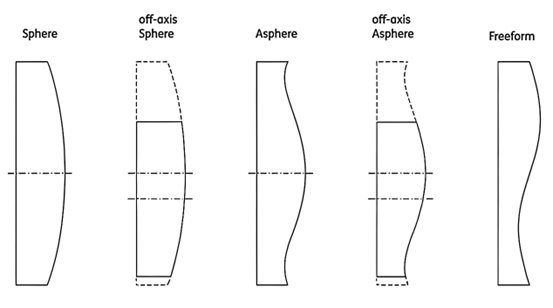The initial structure of a freeform surface can be obtained by gradually approximating from a spherical or aspherical surface, or by performing ray tracing to obtain a point cloud and then conducting surface fitting.
Optical freeform surfaces do not have a strict and precise definition. Generally, they refer to optical surfaces that cannot be represented by spherical or aspherical coefficients or by exact expressions. They mainly refer to non-rotationally symmetric surfaces or surfaces that can only be represented by parametric vectors (such as NURBS surfaces).
In imaging systems, this technology can correct aberrations, improve image quality, and reduce the number and weight of system components.
In non-imaging systems, particularly in high-performance lighting system design, this technology can not only effectively improve light energy utilization but also eliminate the strict requirements on the directionality of illumination. It provides significant design freedom, allowing for the free distribution of light intensity and control over physical quantities such as light angle and optical path difference. This enables the redistribution of the emitted light from the source to form specific light spots on the illumination surface, meeting a range of lighting requirements while greatly enhancing energy efficiency.

| Specifications | Commercial spec. | High precision spec. |
| Material | Fused silica, Zerodur | |
| Dimension | 5mm~500mm | |
| Dimension tolerance | ±0.1mm | ±0.05mm |
| Surface quality | 60/40 | 20/10 |
| Surface accuracy | RMS<λ/30@632.8nm | RMS<λ/150@632.8nm |
| Clear aperture | >85% of dim | >90% of dim |
| Surface roughness | Ra<3nm | Ra<0.2nm |
| K-value | As per the drawing | |
| Bevel | <0.2mm x 45deg | <0.1mm x 45deg |
| Coating | Up on clients’ request | |
